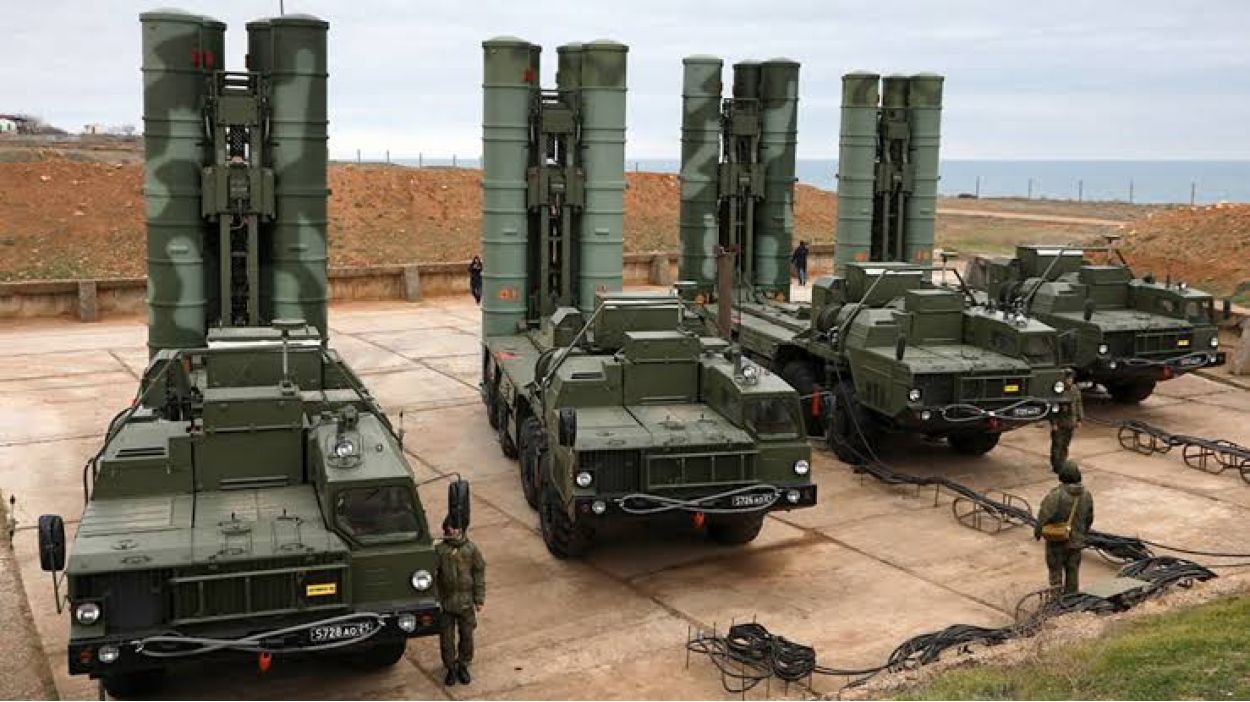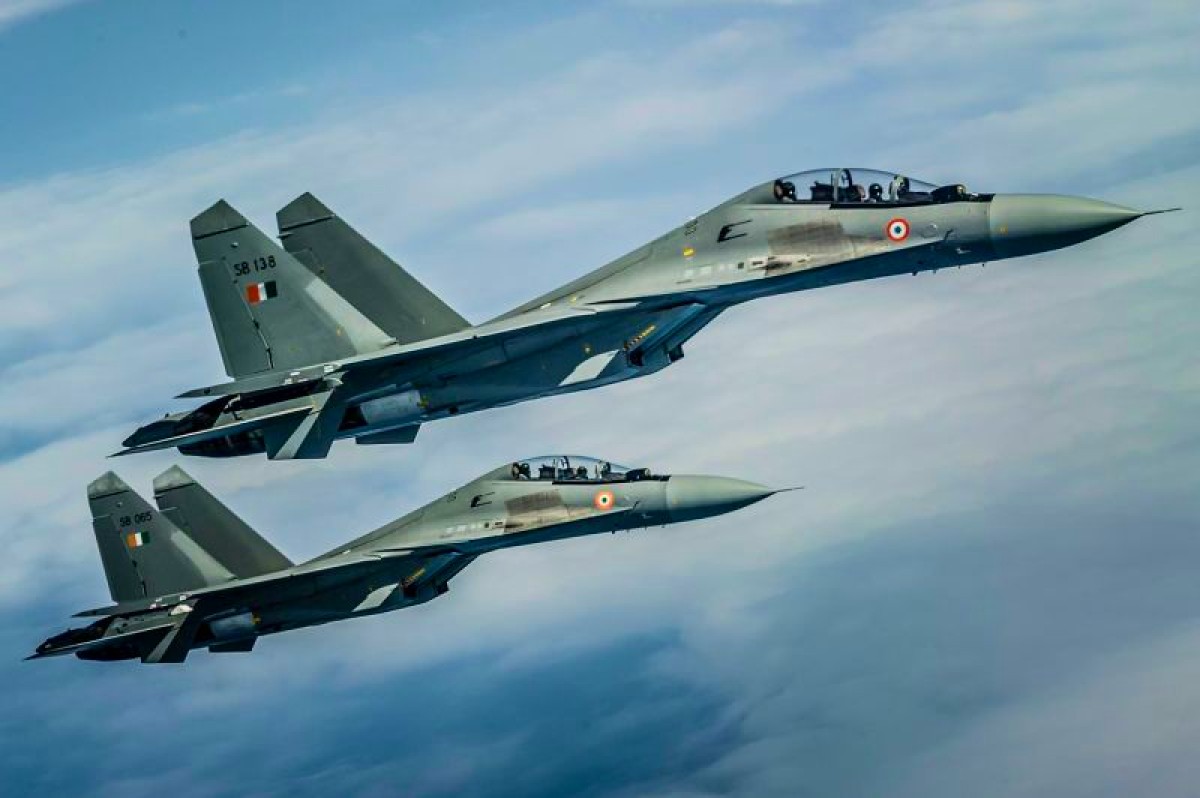India’s air force has been forced to reduce its budgetary projections for the 2023 financial year following the delay in the delivery of a major air defense system from Russia, a parliamentary panel has been informed.
China Lacks Willpower, Firepower For A ‘Two Front War’ Against India; Here Is Why PLA Will Avoid The Himalayan Conflict
Media reports on the parliamentary panel report, tabled in parliament at the end of March 2023, said the major air defense system was nothing but the S-400 missiles procured from the Russian Federation.
EurAsian Times had previously reported that India had signed a US$5.5-billion deal with Russia for five S-400 missile systems in October 2018.
The exact words of the Indian Air Force (IAF) representative, as quoted in the Indian media, were: “There is a major project… where the deliveries have been stopped because of the war (that is) going on. So, we had a major delivery this year, which will not occur.
“They have given us in writing that they cannot deliver it. That is why the major part of (capital expenditure) projection has been reduced.”
It can be safely assumed that the IAF representative referred to the S-400 system.
What Went Wrong?
Following the start of the Russian Special Military Operation (SMO) in February 2022, there was little or no discernible impact on Russia’s ability to fulfill its contractual obligations towards supplying military equipment and spares to India.
Russia likely planned a short military operation with a decisive ending in its favor. Based on that premise, it continued to deliver S-400 regiments to India as per the contracted schedule, even after the start of the SMO. Delivery of the second regiment started in July 2022 and of the third regiment in January 2023.
In January 2023, ANI quoted unnamed sources to report that the only issue between the two countries regarding S-400 supplies was the payment difficulty India was facing, given the international restrictions on financial transactions with Russia.
‘Blown Away’ By UAV & ATGM Attacks, Russia To Arm Its T-90M Tanks With Arena-M Active Protection System
Russia likely did not anticipate the volume and sophistication of military hardware and ISR (Intelligence, Surveillance, Reconnaissance) assistance the US/NATO provided to Ukraine.
The aid has prolonged the conflict but so far has not changed the course of the conflict. Russia still assesses that it will ultimately prevail. However, it now also sees the possibility of NATO intervention to reverse the course of the war.
Russia is known to be using the S-400 system in the SMO. As such, its stocks of spares and missiles are continuously depleting. Western sanctions likely limit Russia’s ability to produce missiles and spares for the system.
According to a report, the PLA Air Force used a subsidiary to deliver critical components for Russia’s S-400 missile defense system. If true, Russia is indeed short of S-400 components and not in a position to continue supplying S-400 systems to India.
Under the circumstances, the fact that Russia has sought a force majeure pushback of delivery dates for the residual two S-400 regiments couldn’t have caught India’s political & military leadership by surprise.

Impact Of S-400 Delay
Force Majeure delays in contracts, particularly military deals, are not. They don’t necessarily represent a rupture of the supply pipeline or a blot on the supplier’s reliability.
Some developments indicate that Russia may have invoked force majeure to get the supply of Su-30MKI spares. Russian aerospace forces extensively use the Su-30MKI analog, Su-30SM, in the SMO. Russia could well be facing a shortage of Su-30SM spares.
The above-quoted report also states that in February 2023, the Chinese firm AVIC International delivered US $ 1.2 million worth of parts for Russia’s Su-35S fighters! There are a lot of commonalities between Su-30SM and Su-35S components.
Indeed, it’s likely that Russia may be unable to meet its contractual obligations for other weapon systems it has supplied to India.
Consider the following: Russian weapon systems have a lot of commonalities because Russia adopts an evolutionary approach to weapons development to lower costs and field technological advances as quickly as possible.
For example, many subsystems of the BrahMos cruise missiles are common to the P-800 Oniks missile that Russia deploys on its ships and coastal batteries and has used extensively over the past year.
The supply of Russian subsystems common to the BrahMos and P-800 will likely be delayed. Of course, BAPL (BrahMos Aerospace Private Limited) probably has a large stock of spares, so there may be no immediate negative impact on India. With foresight, BAPL has been making concerted efforts to indigenize the missile to the maximum possible extent.
Besides BrahMos, other Russian-supplied platforms are likely affected by the prolonged conflict. On February 6, the IAF reportedly issued an indigenization requirement for nearly 600 items used in Russian-origin platforms. The list includes spare parts for Mi-17, MiG-29, Su-30MKI, AN-32, Il-76, and Il-78, among other platforms.

India, Russia Relationship Will Endure The Squeeze
Strategic prudence mandates that Russia remains prepared for a NATO intervention; however dangerous such an intervention may be for the world in general. As such, even if Russia could spare reserves, it would be well advised not to — until the war is over!
But the war could take a long time to end. If that is the case, to retain goodwill and close strategic ties with India, Russia could mitigate India’s difficulties by increasing the Transfer of Technology (ToT), perhaps to unprecedented levels, to facilitate the local manufacture of components and subsystems in India.
Indeed, media reports hint that a deeper relationship between the two partners may well be evolving. In October 2018, a senior IAF officer was quoted by The Print that the IAF might procure additional S-400 squadrons on completion of the initial deliveries.
The officer explained that given India’s lengthy and unsettled borders and two long coastlines, “it makes operational sense to have about ten systems of the S-400.”
In September 2019, Rostec CEO Sergey Chemezov hinted that India and Russia could circumvent the impact of US sanctions against trade with Russia on the S-400 deal through localized production.
“Yes, we are discussing the localization [of S-400 production] with India as well,” Chemezov reportedly told an RBK broadcaster.
In the long run, the Ukraine war and US sanctions may drive Russia and India into a deeper partnership than the one prevailing now. US attempts to wean India away from its dependency on Russia for military hardware may, ironically, have the opposite effect.
- Vijainder K Thakur is a retired IAF Jaguar pilot. He is also an author, software architect, entrepreneur, and military analyst. VIEWS PERSONAL
- Follow the author @vkthakur




